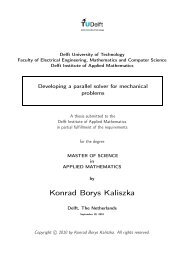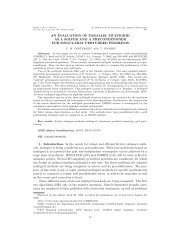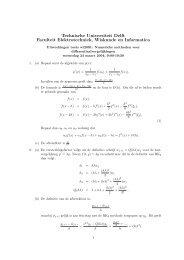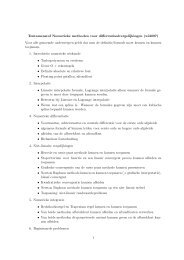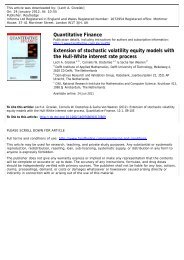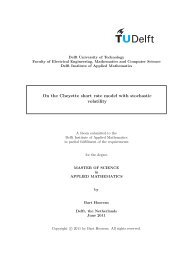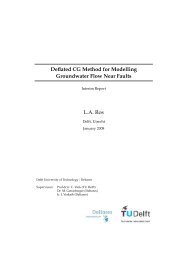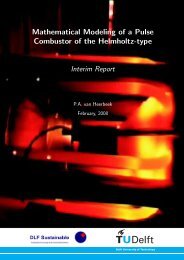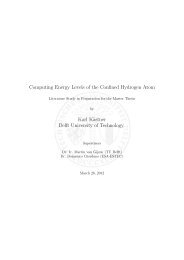Modeling bone regeneration around endosseous implants
Modeling bone regeneration around endosseous implants
Modeling bone regeneration around endosseous implants
You also want an ePaper? Increase the reach of your titles
YUMPU automatically turns print PDFs into web optimized ePapers that Google loves.
1.2. Study motivation 3given by Audigé et al. [10]. They have done an observational study of thetreatment of 416 patients with tibial shaft fractures, and reported 52 (13%)cases of delayed healing or nonunion.The natural regenerative capacity of <strong>bone</strong> tissue is not sufficient in certainsituations, which appear in orthopaedic, oral and maxillofacial surgery,such as skeletal reconstruction of large <strong>bone</strong> defects created by trauma, infection,tumor resection and skeletal abnormalities, or cases in which <strong>bone</strong><strong>regeneration</strong> is compromised due to diseases, like osteoporosis or avascularnecrosis [26]. For example, 3.79 million osteoporosis fractures were estimatedin the European Union in 2000, and direct medical cost for their treatmentwere <strong>around</strong> 32 billion euros [82].Einhorn [30] and Dimitriou et al. [26] review temporary treatment methods,which are aimed at promoting natural <strong>bone</strong> <strong>regeneration</strong> in situations,where this process is impaired or simply insufficient. Among the treatmenttechniques, which are often applied in clinical practice, the authors mentiondistraction osteogenesis and <strong>bone</strong> transport; <strong>bone</strong>-grafting methods, such asautologous <strong>bone</strong> grafts, allografts, and <strong>bone</strong>-graft substitutes or growth factors;non-invasive methods of biophysical stimulation, such as low-intensitypulsed ultrasound and pulsed electromagnetic fields; mechanical stimulation.These methods can be used separately or in combinations. However,the efficiency and the applicability of the considered techniques are stilllimited.In order to improve existing methods and to develop new approaches, abetter understanding of the processes, taking place during <strong>regeneration</strong> of<strong>bone</strong>, is needed. A large number of experimental works is devoted to theinvestigation of the influence of various factors on the course of <strong>bone</strong> healing.In in-vivo experiments, the biological processes are observed in naturalconditions. However, obtaining temporal and spatial experimental dataoften becomes technically complicated. Contemporary non-invasive methodssuch as various imaging techniques can sufficiently enhance the acquisitionof the qualitative and quantitative information about the biology of<strong>bone</strong> <strong>regeneration</strong>. Molecular imaging techniques, which are reviewed inMayer-Kuckuk and Boskey [64], can be used for real-time biology studiesof <strong>bone</strong> <strong>regeneration</strong> in living tissues. These techniques are classified intothree groups: nuclear imaging (among which are single photon computedtomography (SPECT) and positron emission tomography (PET)), opticalimaging methods (in particular fluorescence reflectance imaging (FRI) andbioluminescence imaging (BLI)) and magnetic resonance imaging (MRI).An alternative to in-vivo experiments is in-vitro studies. In these studies,it is possible to obtain a highly controllable and measurable environment, inwhich biological processes are observed. The disadvantage of this approachis that tissues and cells are separated from their natural environment. Somespecial attention should be paid to make the experimental settings correspondto natural conditions, in which <strong>bone</strong> <strong>regeneration</strong> takes place in real



